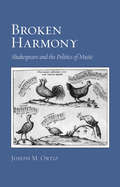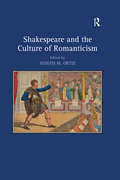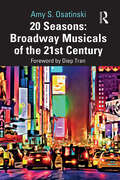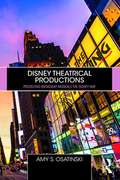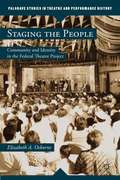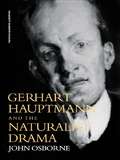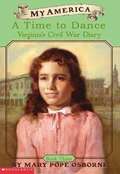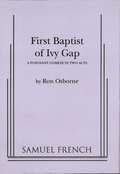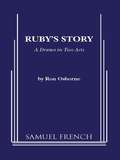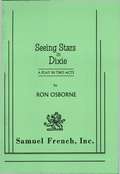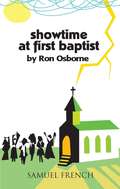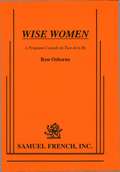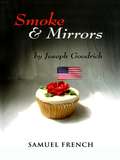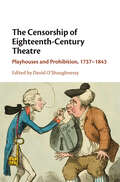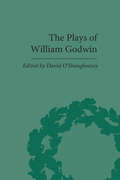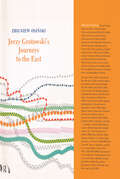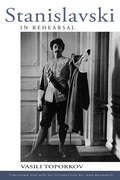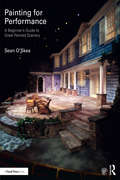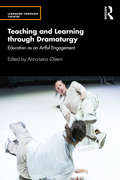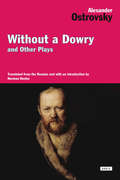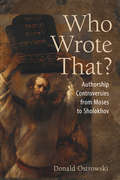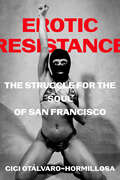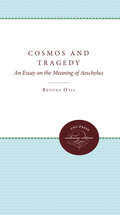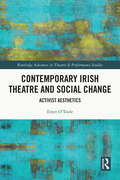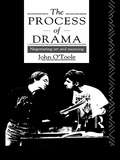- Table View
- List View
Broken Harmony: Shakespeare and the Politics of Music
by Joseph M. OrtizMusic was a subject of considerable debate during the Renaissance. The notion that music could be interpreted in a meaningful way clashed regularly with evidence that music was in fact profoundly promiscuous in its application and effects. Subsequently, much writing in the period reflects a desire to ward off music’s illegibility rather than come to terms with its actual effects. In Broken Harmony Joseph M. Ortiz revises our understanding of music’s relationship to language in Renaissance England. In the process he shows the degree to which discussions of music were ideologically and politically charged. Offering a historically nuanced account of the early modern debate over music, along with close readings of several of Shakespeare’s plays (including Titus Andronicus, The Merchant of Venice, The Tempest, and The Winter’s Tale) and Milton’s A Maske, Ortiz challenges the consensus that music’s affinity with poetry was widely accepted, or even desired, by Renaissance poets. Shakespeare more than any other early modern poet exposed the fault lines in the debate about music’s function in art, repeatedly staging disruptive scenes of music that expose an underlying struggle between textual and sensuous authorities. Such musical interventions in textual experiences highlight the significance of sound as an aesthetic and sensory experience independent of any narrative function.
Shakespeare and the Culture of Romanticism
by Joseph M. OrtizThe idea of Shakespearean genius and sublimity is usually understood to be a product of the Romantic period, promulgated by poets such as Coleridge and Byron who promoted Shakespeare as the supreme example of literary genius and creative imagination. However, the picture looks very different when viewed from the perspective of the myriad theater directors, actors, poets, political philosophers, gallery owners, and other professionals in the nineteenth century who turned to Shakespeare to advance their own political, artistic, or commercial interests. Often, as in John Kemble’s staging of The Winter’s Tale at Drury Lane or John Boydell’s marketing of paintings in his Shakespeare Gallery, Shakespeare provided a literal platform on which both artists and entrepreneurs could strive to influence cultural tastes and points of view. At other times, Romantic writers found in Shakespeare’s works a set of rhetorical and theatrical tools through which to form their own public personae, both poetic and political. Women writers in particular often adapted Shakespeare to express their own political and social concerns. Taken together, all of these critical and aesthetic responses attest to the remarkable malleability of the Shakespearean corpus in the Romantic period. As the contributors show, Romantic writers of all persuasions”Whig and Tory, male and female, intellectual and commercial”found in Shakespeare a powerful medium through which to claim authority for their particular interests.
20 Seasons: Broadway Musicals of the 21st Century
by Amy S. Osatinski20 Seasons: Broadway Musicals of the 21st Century catalogues, categorizes, and analyzes the 269 musicals that opened on Broadway from the 2000-2001 season through the 2019-2020 season. This book is the first to comprehensively examine the musicals that premiered on Broadway during this important historical period, which was bookended by the 9/11 terrorist attacks on one end and the Coronavirus pandemic on the other. It begins by exploring the historical context for the first 20 years of the 21st century and how this impacted American culture and theatre. Rather than chronologically, the musicals are then organized into categories based on their source material and whether they were original musicals or revivals, painting a detailed picture of the Broadway musical in first 20 years of the 21st century. Jukebox musicals, screen-to-stage musicals, revivals, and other original musicals are all covered, and each chapter ends with reading guides and discussion prompts. The book not only discusses what was produced, but by whom, uncovering the stark lack of representation for women and artists of color on Broadway musical creative and design teams. Additionally, the last chapter discusses the COVID-19 pandemic, the Broadway shutdown, and what happened to the Broadway musical during the shutdown, including the response to the Black Lives Matter movement in the summer of 2020. 20 Seasons: Broadway Musicals of the 21st Century will appeal to fans and scholars of musical theatre, as well as students of Musical Theatre, Musical Theatre History, American Studies, and Pop Culture Studies.
Disney Theatrical Productions: Producing Broadway Musicals the Disney Way
by Amy S. OsatinskiDisney Theatrical Productions: Producing Broadway Musicals the Disney Way is the first work of scholarship to comprehensively examine the history and production practices of Disney Theatrical Productions (DTP), the theatrical producing arm of the studio branch of the Walt Disney Corporation. This book uncovers how DTP has forged a new model for producing large-scale musicals on Broadway by functioning as an independent theatrical producer under the umbrella of a large entertainment corporation. Case studies of three productions (The Lion King, Tarzan, and Newsies) demonstrate the flexibility and ingenuity of DTP, and showcase the various production models that the company has employed over the years. Exploring topics such as the history of DTP, its impact on the revitalization of Times Square, and its ability to open up a new audience base for Broadway theatre, this volume examines the impact that DTP has had on American musicals, both domestically and internationally, and how its accomplishments have helped reshape the Broadway landscape. This book is relevant to students in Musical Theatre, History of Musical Theatre, Theatre History, and Arts Management courses, along with general Disney enthusiasts.
Staging the People
by Elizabeth A. OsborneThe Federal Theatre Project stands alone as the only national theatre in the history of the United States. This study re-imagines this vital moment in American history, considering the Federal Theatre Project on its own terms - as a "federation of theatres" designed to stimulate new audiences and create locally-relevant theatre during the turbulent 1930s. It integrates a wealth of previously undiscovered archival materials with cultural history, delving into regional activities in Chicago, Boston, Portland, Atlanta, and Birmingham, as well as tours of refugee camps and Civilian Conservation Corps Divisions. For a brief, exhilarating moment, the Federal Theatre Project created a democratic theatre that staged the American people.
Gerhard Hauptmann and the Naturalist Drama
by John OsborneWhat was German Naturalism? What were its achievements? How does it compare with its counterparts in other European countries? These are some of the difficult questions addressed by John Osborne in Gerhart Hauptmann and the Naturalist Drama, a revised and updated version of his The Naturalist Drama in Germany, now widely acknowledged as the standard introduction to the subject. The debates to which he contributed, and in some cases initiated, on Naturalism in the German theatre, Naturalist theory in Germany, and the development of the Naturalist movement to the contemporary Social Democrat movement, have remained central issues. This revised edition preserves the structure and approach of the original, including its emphasis on the early dramas of Hauptmann, while taking full account of subsequent scholarship which provides the context in which this Naturalist playwright's work can be placed.
A Time to Dance: Virginia's Civil War Diary, Book Three (My America Series)
by Mary Pope Osborne Will OsborneVirginia Dickens continues to chronicle the aftermath of the Civil War, as she and her family move their lives from Washington, D.C. to New York City. Throughout the times of difficulty and joy, Ginny is always courageous and sweet.
First Baptist of Ivy Gap
by Ron OsborneComedy / 6f / During WWII, six women gather at the church to roll bandages and plan the church's 75th anniversary. Overseeing things is Edith, the pastor's wise-cracking wife who dispenses Red Cross smocks and witty repartee to Luby, whose son is fighting in the Pacific; Mae Ellen, the church's rebellious organist who wants to quit but hasn't the courage; Olene, who dreams of a career in Hollywood; Sammy, a shy newcomer with a secret; and Vera, an influential Baptist with a secret of her own. When Luby learns her son has been wounded, she confounds the others by blaming the vulnerable Sammy. Twenty-five years later, our "First Baptist Six" reunite. Back to reconcile with Luby - whose son died of his wounds - is Sammy, whose own son is now in Vietnam; and Olene, whose flashy show business career will set the town on its ear. There to welcome them are Vera, her secret still safe; Mae Ellen, still rebellious and still looking for an escape; and Edith, whose biggest challenge isn't the church's upcoming centennial but revelations that shake relationships formed over a quarter of a century. With humor and pathos, these six very different women find comfort, forgiveness and redemption in each other. Winner of multiple playwriting awards.
Ruby's Story
by Ron OsborneDrama / Characters: 3m, 6f / June 1944. In England, Allied troops are massing for an invasion. On a small farm in Appalachia, a different kind of war is about to rage. Here, Walter and Grace share a home with four daughters: Rose, who struggles to understand why Stan - an immigrant coal miner and the love of her life - abruptly left to join the Polish Free Forces; Helga, who fears for her husband who's in the Army and - like Stan - assigned to a combat unit in England; Frieda, the family's adventure-seeking daughter, who works in a factory making uniforms and new friends, one of whom she can't bring home; and teenage Ruby who yearns to be the next Edward R. Murrow, but who must first come to grips with a family falling apart at the seams. D-Day speeds the dissolution process. But at its core is Walter's seeming allegiance to his German heritage, no matter that Helga's husband and Rose's fiancé are at war against all things German. There - through every battle - is Grace, hoping liberal doses of humor, love and understanding can restore harmony. It is adult Ruby - back for a funeral, seeking answers to questions that haunt her - who retells the family's struggle against prejudice, fear, delusion and self-loathing.
Seeing Stars in Dixie
by Ron OsborneComedic Drama / 1m, 4f / It's 1956 and Hollywood has arrived in Natchez, Mississippi with its brightest stars to film Raintree County . Meanwhile at Clemmie's, a Natchez tea room, the widowed proprietor who has a fascination with movies and a secret admirer, oversees her own cast of characters: Tootie, her take charge friend; Jo Beth, a former beauty queen; Glease, a man more comfortable with women than macho men, and Marjorie, an unethical social climber. Competition for a small role in the movie brings out the best and worst of these memorable characters. Twists, turns and revelations lead Clemmie to trade a moment of fame for love and the chance to impact the lives of people dear to her. Originally produced at the Sonoma County Repertory Theatre in Sebastopol, CA.
Showtime at First Baptist
by Ron OsborneDramatic Comedy / 6f Showtime at First Baptist is the sequel to the hugely popular and widely produced First Baptist of Ivy Gap. First Baptist of Ivy Gap's 100th anniversary picnic was a smashing success, except for one little thing: the bolt of lightning that struck the church's steeple, igniting a fire that destroyed the sanctuary and so much more. In the wake of the disaster, key women of the church - led by Edith, the pastor's take-charge wife - gather in what's left (the fellowship hall) to commiserate and try to put things back together. To raise spirits and funds for rebuilding, the women plan an evening of entertainment designed to showcase the congregation's talent. Could it be that some of Edith's gang plan a song and dance number that may shock the congregation? If so, how will they circumvent the authority of the all-male conservative board of deacons, not to mention, one of their own? Change is in the air as these six diverse women challenge institutions as well as each other. Along the way, there are laughs to be shared, battles to be fought, love to be won, relationships to be mended, and losses to be grieved. "Good natured religious jokes aplenty and drama ... But the real meat is a gentle, warm story about six good women and how they came together despite times that are, 'a changing' ... A serious play and a delightful comedy ... I sure enjoyed it." - Bristol Herald-Courier "Sure to be an instant classic ... This touching comedy is full of laughs, realistic characters and thought-provoking issues ... The Southern women who inhabit the world of Ivy Gap are amazing! Osborne can definitely write great women characters ... It's small-town politics at its most entertaining ... Bring the whole family." - Washington County News
Wise Women
by Ron OsborneComedy / 2m, 4f / Unit set / It's almost Christmas, 1944. In Knoxville, Tennessee, a frustrated mother with a secret and a teenage daughter with a dream take in two young roomers who work at a nearby bomb-making plant. Both girls are asserting their independence, one in the company of servicemen, the other as a contestant in a Miss Bombshell U.S.A. competition, an action that puts her at odds with her father, a preacher in a small Virginia town. Along the way, the teenage daughter, who worries more about rumors of an asteroid said to be streaking toward nearby Chattanooga than a vicious war raging around the world, bamboozles her mother into allowing her to attend a Frank Sinatra concert at the local USO. When she brings home a young war-bound Marine as naive as herself, this colorful collection of characters is pulled apart, then mended with humor, romance, twists, turns and revelations. As these women struggle, grow and ultimately succeed, at least for one fragile moment in time-they remind us that we're all "family" and, in each other's company, we may find ourselves.
Smoke And Mirrors
by Will OsborneFull Length, Mystery Comedy \ 4m, 1f \ Int. \ This rivetting mystery comedy will keep audiences guessing as they go on location to an isolated island off the Gulf coast to watch power hungry producer/director Hamilton Orr lure his timid screenwriter Clark into a scheme to get rid of the insufferable star of their multi-million dollar film. The plot hinges on the rehearsal of a suicide scene and the only witness to the murder is Hamilton's wife Barbara, the film's quirky publicist and Clark's former lover. The wily, eccentric sheriff unearths one surprise after another until the final stunning revelation. \ "A good mystery ... [with] funny dialogue, well crafted characters. If Agatha Christie and Noel Coward had collaborated on Robert Altman's 'The Player', they might have come up with something like this." Palm Beach Post.
The Censorship of Eighteenth-Century Theatre: Playhouses and Prohibition, 1737–1843
by David O’ShaughnessyThis collection reveals the wide-ranging impact of the Stage Licensing Act of 1737 on literary and theatrical culture in Georgian Britain. Demonstrating the differing motivations of the state in censoring public performances of plays after the Stage Licensing Act of 1737 and until the Theatres Act 1843, chapters cover a wide variety of theatrical genres across a century and show how the mechanisms of formal censorship operated under the Lord Chamberlain's Examiner of Plays. They also explore the effects of informal censorship, whereby playwrights, audiences and managers internalized the censorship regime. As such, the volume moves beyond a narrow focus on erasures and emendations visible on manuscripts to elucidate censorship's wide-ranging significance across the long eighteenth century. Demonstrating theatre archives' potency as a resource for historical research, this volume is of exceptional value for researchers interested in the evolving complexities of Georgian society, its politics and mores.
The Plays of William Godwin (The Pickering Masters)
by David O'ShaughnessyBest known for "Enquiry Concerning Political Justice" (1793) and "Caleb Williams" (1794), William Godwin (1756-1836) is one of the most important figures of the Romantic period. This book offers academics the chance to build a complete picture of Godwin as a writer and political figure.
Jerzy Grotowski's Journeys to the East
by Zbigniew OsinskiJerzy Grotowski’s Journeys to the East is an unusual collection of facts, quotations, and commentaries documenting the real and metaphorical journeys of the Polish theatre director and ‘teacher of performers’ into a geographical and cultural dimension which we used to and still call the Orient. Grotowski’s contacts and meetings with the East are placed here in the context of his biography. Painstakingly researched by Grotowski’s main biographer Zbigniew Osiński, this book is necessary reading for those interested in Grotowski’s deep relationship with the East and in the inspiration he drew from its various cultures. The book will appeal to all readers who feel a need to have a glimpse of the East from the perspective of one of the main theatre reformers in the twentieth century.
Stanislavski in Rehearsal
by Vasily Osipovich ToporkovVasili Toporkov was one of the rare outsiders ever to be invited to join the Moscow Art Theatre. Although already an experienced and accomplished artist, he was forced to retrain as an actor under Stanislavski's rigorous guidance. This is Toporkov's account of this learning process, offering an insight into Stanislavski's legendary "system" and his method of rehearsal that became known as the method of physical action. Spanning ten years - from 1928 to 1938 - Toporkov charts the last crucial years of Stanislavski's work as a director. Toporkov reveals Stanislavski as a multi-faceted personality - funny, furious, kind, ruthless, encouraging, exacting - waging war against clichés and quick answers, inspiring his actors and driving to despair in his pursuit of artistic perfection. Jean Benedetti's new translation of Toporkov's invaluable record restores to us the vitality and insight of Stanislavski's mature thoughts on acting.
Painting for Performance: A Beginner’s Guide to Great Painted Scenery
by Sean O'SkeaPainting for Performance removes the mystery from painting and gives beginners the terms, tools, and techniques to approach their unpainted set with confidence. Covering the mechanics of paint and its many implementations in set design, this book provides simple and effective step-by-step instructions for painting a variety of surfaces to look great on stage.
Teaching and Learning through Dramaturgy: Education as an Artful Engagement (Learning Through Theatre)
by Anna-Lena ØsternThe aim of this book is to contribute a dramaturgical perspective to education. The authors write from a dramaturgical perspective about the planning of teaching, leadership in the classroom, the teacher-body, the teacher’s oral skills and ethics, communication, and about the spaces in which teaching takes place. The book is written with the pre-understanding that the ways in which art creates knowledge need to be illuminated and articulated more clearly in educational thinking, thereby enhancing artful engagement in education. Dramaturgical perspectives are presented as such a way – a form of knowledge that the artform of drama/theatre can contribute to teaching and learning in general. Through examples and analyses of empirical material, as well as through theoretical perspectives, the authors show chapter by chapter how dramaturgy and a dramaturgically inspired language and concepts create more possibilities of choice for teachers in planning and carrying out their teaching. Teaching and Learning through Dramaturgy brings to the forefront what will be enabled in teaching and planning of teaching, by making use of a dramaturgically inspired language and action, what in principle is possible in every subject.
Without a Dowry and Other Plays
by Alexander OstrovskyOne of the most important Russian playwrights of the nineteenth century, Alexander Ostrovsky (1823-1886) is credited with bringing realism to the Russian stage. Contemporary of Turgenev, Dostoevsky, and Tolstoy and precursor to Chekhov, he was a keen sociological observer, often exposing abuses of power, landing him in trouble with the censors again and again. He wrote 47 original plays and began the tradition of acting today associated with Stanislavsky. Ostrovsky’s plays were written with performance in mind and with a masterful use of colloquial language. To this day they are a much-performed part of the Russian repertory. This volume collects four of Ostrovsky’s key plays, each from a different decade-A Profitable Position, An Ardent Heart, Without a Dowry, and Talents and Admirers, and is rounded out by the translator’s introduction, an afterword for each play, an extensive bibliography, and complete list of Ostrovsky’s works. .
Who Wrote That?: Authorship Controversies from Moses to Sholokhov
by Donald OstrowskiWho Wrote That? examines nine authorship controversies, providing an introduction to particular disputes and teaching students how to assess historical documents, archival materials, and apocryphal stories, as well as internet sources and news. Donald Ostrowski does not argue in favor of one side over another but focuses on the principles of attribution used to make each case.While furthering the field of authorship studies, Who Wrote That? provides an essential resource for instructors at all levels in various subjects. It is ultimately about historical detective work. Using Moses, Analects, the Secret Gospel of Mark, Abelard and Heloise, the Compendium of Chronicles, Rashid al-Din, Shakespeare, Prince Andrei Kurbskii, James MacPherson, and Mikhail Sholokov, Ostrowski builds concrete examples that instructors can use to help students uncover the legitimacy of authorship and to spark the desire to turn over the hidden layers of history so necessary to the craft.
Erotic Resistance: The Struggle for the Soul of San Francisco
by Gigi Otalvaro-HormillosaErotic Resistance celebrates the erotic performance cultures that have shaped San Francisco. It preserves the memory of the city's bohemian past and its essential role in the development of American adult entertainment by highlighting the contributions of women of color, queer women, and trans women who were instrumental in the city's labor history, as well as its LGBT and sex workers' rights movements. In the 1960s, topless entertainment became legal in the city for the first time in the US, though cross-dressing continued to be criminalized. In the 1990s, stripper-artist-activists led the first successful class action lawsuits and efforts to unionize. Gigi Otálvaro-Hormillosa uses visual and performance analysis, historiography, and ethnographic research, including participant observation as both performer and spectator and interviews with legendary burlesquers and strippers, to share this remarkable story.
Cosmos and Tragedy: An Essay on the Meaning of Aeschylus
by Brooks OtisOtis clarifies the moral and theological issues raised in the Ortesia and relates them to certain stylistic and structural qualities of the three plays. He tackles the central questions of guilt, retribution, and the relation between human and divine justice, and he sees a carefully prepared evolution in the trilogy from a primitive to a more civilized form of justice. Otis treats the trilogy as a poem, a play, and a work of theological and philosophical reflection.Originally published in 1981.A UNC Press Enduring Edition -- UNC Press Enduring Editions use the latest in digital technology to make available again books from our distinguished backlist that were previously out of print. These editions are published unaltered from the original, and are presented in affordable paperback formats, bringing readers both historical and cultural value.
Contemporary Irish Theatre and Social Change: Activist Aesthetics (Routledge Advances in Theatre & Performance Studies)
by Emer O'TooleThis book uses the social transformation that has taken place in Ireland from the decriminalisation of homosexuality in 1993 to the repeal of the 8th amendment in 2018 as backdrop to examine relationships between activism and contemporary Irish theatre and performance. It studies art explicitly intended to create social and political change for marginalised constituencies. It asks what happens to theatre aesthetics when artists’ aims are political and argues that activist commitments can create new modes of beauty, meaning, and affect. Categories of race, class, sexuality, and gender frame chapters, provide social context, and identify activist artists’ social targets. This book provides in depth analysis of: Arambe – Ireland’s first African theatre company; THEATREclub – an experimental collective with issues of class at its heart; The International Dublin Gay Theatre Festival; and feminist artists working to Repeal the 8th amendment. It highlights the aesthetic strategies that emerge when artists set their sights on justice. Aesthetic debates, both historical and contemporary, are laid out from first principles, inviting readers to situate themselves – whether as artists, activists, or scholars – in the delicious tension between art and life. This book will be a vital guide to students and scholars interested in theatre and performance studies, gender studies, Irish history, and activism.
The Process of Drama: Negotiating Art and Meaning
by John O'TooleThe Process of Drama provides an original and invaluable model of the elements of drama in context, and defines how these are negotiated to produce dramatic art. John O'Toole takes the reader through a lively, fascinating account of the relationships between the playwright, the elements of dramatic art, and the other artists involved in this most interactive of creative processes. In doing so he demonstrates - with clarity and wit - how dramatic meaning emerges; how the dramatic event is constructed. Areas covered include: roles and relationships the drama space language and movement tension and the audience gesture and movement This is an essential book for every student of drama who wants to understand how the theatrical art form operates
